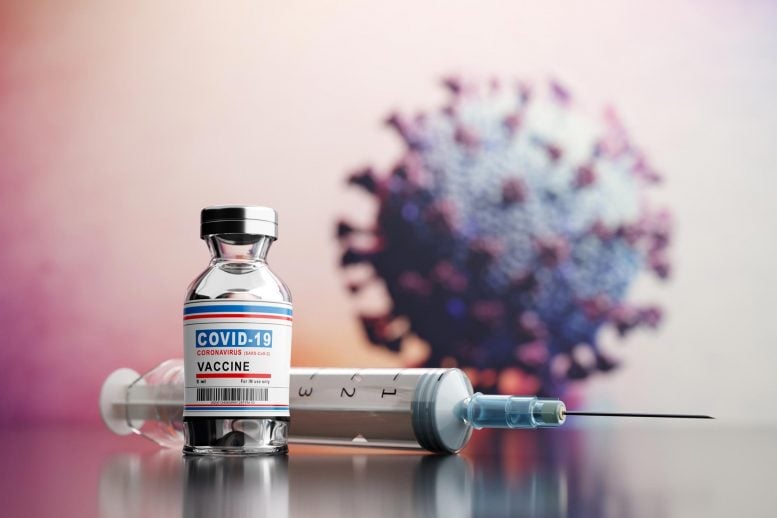
Vaccines don’t ward off every single infection but they do massively lower the risk.
If you’ve been fully vaccinated against COVID-19, maybe you figured you no longer need to worry about contracting the coronavirus. But along with the rising number of new COVID-19 cases globally and growing concern about highly transmissible strains like the delta variant come reports of fully vaccinated people testing positive for COVID-19.
Members of the New York Yankees, U.S. Olympic gymnast Kara Eaker and U.K. health secretary Sajid Javid are some of those diagnosed with what is called a “breakthrough infection.”
As scary as the term may sound, the bottom line is that the existing COVID-19 vaccines are still very good at preventing symptomatic infections, and breakthrough infections happen very rarely. But just how common and how dangerous are they? Here’s a guide to what you need to know.
What is ‘breakthrough infection?’
No vaccine is 100% effective. Dr. Jonas Salk’s polio vaccine was 80%-90% effective in preventing paralytic disease. Even for the gold standard measles vaccine, the efficacy was 94% among a highly vaccinated population during large outbreaks.
Comparably, clinical trials found the mRNA vaccines from Pfizer and Moderna were 94%–95% effective at preventing symptomatic COVID-19 – much more protective than initially hoped.
A quick reminder: A vaccine efficacy of 95% does not mean that the shot protects 95% of people while the other 5% will contract the virus. Vaccine efficacy is a measure of relative risk – you need to compare a group of vaccinated people to a group of unvaccinated people under the same exposure conditions. So consider a three-month study period during which 100 out of 10,000 unvaccinated people got COVID-19. You’d expect five vaccinated people to get sick during that same time. That’s 5% of the 100 unvaccinated people who fell ill, not 5% of the whole group of 10,000.
When people get infected after vaccination, scientists call these cases “breakthrough” infections because the virus broke through the protective barrier the vaccine provides.
How common is COVID-19 infection in the fully vaccinated?
Breakthrough infections are a little more frequent than previously expected and are probably increasing because of growing dominance of the delta variant. But infections in vaccinated people are still very rare and usually cause mild or no symptoms.
For instance, 46 U.S. states and territories voluntarily reported 10,262 breakthrough infections to the U.S. Centers for Disease Control and Prevention between Jan. 1 and April 30, 2021. By comparison, there were 11.8 million COVID-19 diagnoses in total during the same period.
Beginning May 1, 2021, the CDC stopped monitoring vaccine breakthrough cases unless they resulted in hospitalization or death. Through July 19, 2021, there were 5,914 patients with COVID-19 vaccine breakthrough infections who were hospitalized or died in the U.S., out of more than 159 million people fully vaccinated nationwide.
One study between December 15, 2020, and March 31, 2021, that included 258,716 veterans who received two doses of the Pfizer or Moderna vaccine, counted 410 who got breakthrough infections – that’s 0.16% of the total. Similarly, a study in New York noted 86 cases of COVID-19 breakthrough infections between February 1 and April 30, 2021, among 126,367 people who were fully vaccinated, mostly with mRNA vaccines. This accounts for 1.2% of total COVID-19 cases and 0.07% of the fully vaccinated population.

Even if you’re fully vaccinated, you should get tested if you have symptoms.
How serious is a COVID-19 breakthrough infection?
The CDC defines a vaccine breakthrough infection as one in which a nasal swab can detect the SARS-CoV-2 RNA or protein more than 14 days after a person has completed the full recommended doses of an FDA-authorized COVID-19 vaccine.
Note that a breakthrough infection doesn’t necessarily mean the person feels sick – and in fact, 27% of breakthrough cases reported to the CDC were asymptomatic. Only 10% of the breakthrough-infected people were known to be hospitalized (some for reasons other than COVID-19), and 2% died. For comparison, during the spring of 2020 when vaccines were not yet available, over 6% of confirmed infections were fatal.
In a study at U.S. military treatment facilities, none of the breakthrough infections led to hospitalization. In another study, after just one dose of Pfizer vaccine the vaccinated people who tested positive for COVID-19 had a quarter less virus in their bodies than those who were unvaccinated and tested positive.
What makes a breakthrough infection more likely?
Nationwide, on average more than 5% of COVID-19 tests are coming back positive; in Alabama, Mississippi and Oklahoma, the positivity rate is above 30%. Lots of coronavirus circulating in a community pushes the chance of breakthrough infections higher.
The likelihood is greater in situations of close contact, such as in a cramped working space, party, restaurant or stadium. Breakthrough infections are also more likely among health care workers who are in frequent contact with infected patients.
For reasons that are unclear, nationwide CDC data found that women account for 63% of breakthrough infections. Some smaller studies identified women as the majority of breakthrough cases as well.
Vaccines trigger a less robust immune response among older people, and the chances of a breakthrough infection get higher with increasing age. Among the breakthrough cases tracked by the CDC, 75% occurred in patients age 65 and older.
Being immunocompromised or having underlying conditions such as high blood pressure, diabetes, heart disease, chronic kidney and lung diseases and cancer increase the chances of breakthrough infections and can lead to severe COVID-19. For example, fully vaccinated organ transplant recipients were 82 times more likely to get a breakthrough infection and had a 485-fold higher risk of hospitalization and death after a breakthrough infection compared with the vaccinated general population in one study.
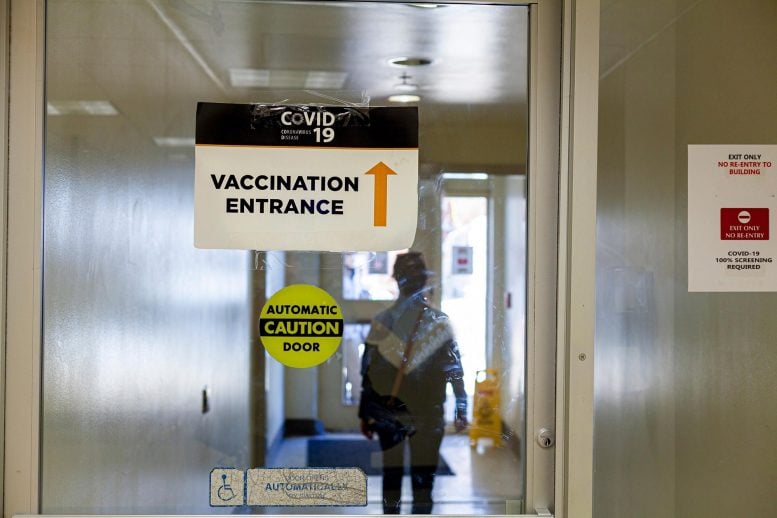
Vaccination is still your best bet against emerging coronavirus variants.
How do variants like delta change things?
Researchers developed today’s vaccines to ward off earlier strains of the SARS-CoV-2 virus. Since then new variants have emerged, many of which are better at dodging the antibodies produced by the currently authorized vaccines. While existing vaccines are still very effective against these variants for preventing hospitalization, they are less effective than against previous variants.
Two doses of the mRNA vaccines were only 79% effective at preventing symptomatic disease with delta, compared with 89% effective in the case of the earlier alpha variant, according to Public Health England. A single dose was only 35% protective against delta.
About 12.5% of the 229,218 delta variant cases across England through July 19 were among fully vaccinated people.
Israel, with high vaccination rates, has reported that full vaccination with the Pfizer vaccine might be only 39%-40.5% effective at preventing delta variant infections of any severity, down from early estimates of 90%. Israel’s findings suggest that within six months, COVID-19 vaccines’ efficacy at preventing infection and symptomatic disease declines. The good news, though, is that the vaccine is still highly effective at protecting against hospitalization (88%) and severe illness (91.4%) caused by the now-dominant delta variant.
So how well are vaccines holding up?
As of the end of July 2021, 49.1% of the U.S. population, or just over 163 million people, are fully vaccinated. Nearly 90% of Americans over the age of 65 have received at least one dose of a vaccine.
Scientists’ models suggest that vaccination may have saved approximately 279,000 lives in the U.S. and prevented up to 1.25 million hospitalizations by the end of June 2021. Similarly, in England about 30,300 deaths, 46,300 hospitalizations and 8.15 million infections may have been prevented by COVID-19 vaccines. In Israel, the high vaccination rate is thought to have caused a 77% drop in cases and a 68% drop in hospitalizations from that nation’s pandemic peak.
Across the U.S., only 150 out of more than 18,000 deaths due to COVID-19 in May were of people who had been fully vaccinated. That means nearly all COVID-19 deaths in U.S. are among those who remain unvaccinated.
The U.S. is becoming “almost like two Americas,” as Anthony Fauci put it, divided between the vaccinated and the unvaccinated. Those who have not been fully vaccinated against COVID-19 remain at risk from the coronavirus that has so far killed more than 600,000 people in the U.S.
Written by Sanjay Mishra, PhD, Project Coordinator & Staff Scientist, Vanderbilt University Medical Center, Vanderbilt University.
Adapted from an article originally published on The Conversation.![]()

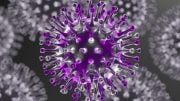
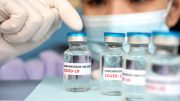

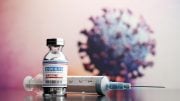

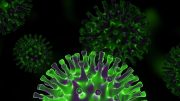

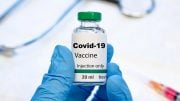
All of the math based on studies when the vaccines were given earlier this year is misleading. Vaccine efficacy drops by about 6 percent every two months. That means that the number of breakthrough infections will be expected to change with each passing month post-vaccination until such time there is no difference between rates of infection between vaccinated vs. unvaccinated.
What would be helpful to know is the rate of breakthrough infection broken down by time post-vaccination vs. vaccine type. To my knowledge there is absolutely nothing in the public domain that attempts to answer this question.
Based on the news coming out of Israel, vaccine efficacy (to prevent infection) had dropped to 39% and now they’re reporting even less. Vaccine manufacturers expected to be able to market boosters annually much like the flu shot, but 4-9 months appears to be a period of sharp drop-off. They won’t get us to the 12 month mark if this rate of immune “decay” keeps up.
Now consider this: One of the challenges of mRNA vaccine development is stabilizing the lipid-nanoparticles. If they do not decay they can accumulate in the liver, spleen, etc. per research that is searchable on PubMed. If they breakdown too fast, they don’t provide the anticipated immunity. A news story came out earlier this year in which apparently it was found that there were inconsistencies in the intergrity of the nanoparticles. Pfizer just waved off the problem. I think we’re seeing two things: Among the older and more vulnerable who received the vaccines first, they have simply worn off — Delta variant or not. Among younger, healthier people who were not eligible for vaccination until later in the Spring but who developed breakthrough infections, it is likely that the vaccine itself was a dud and did not produce sufficient neutralizing antibodies.
There are other factors throwing off any/all attempt to do math on vaccinated vs. unvaccinated COVID-19 cases: CDC changing the goalposts to test for COVID-19 only in vaccinated people severe enough to require hospitalization makes it impossible to appreciate how common breakthrough cases may be. If anything, those who are vaccinated are less likely to present for testing because they are less sick and/or assume they can’t get COVID-19 as compared to those who are unvaccinated. And secondly, the PCR testing that we relied on to identify cases has been retracted by the FDA with labs being told to take another approach to diagnosis. (Indirectly, FDA admits that using the criteria last year flu and COVID-19 cases could have been intermingled — hence the mistaken news that the “flu” last year had been snuffed out. It wasn’t gone it was just rolled into COVID-19!.)
In short, most of the number crunching in media reports is bound to be misleading because there are too many confounding factors.
Since I am immunocompromised both by age and “co-morbidities”, I am loath to consider returning to work under these conditions. My state is demanding a search for work now in order to continue to get unemployment benefits, but I do not believe it is safe for me to return to an office atmosphere. I believe that the EDD should be taking notice of this fact, along with the remaining risk of infection from the Delta and other new variants and should not have dropped the policy of not requiring people like me to search for work until it is absolutely safe to do so. Nobody should have to risk their life for a job or to receive benefits during a pandemic.
Since 75% of breakthrough cases are in the over 65 age group, this puts almost all the other statistics in question. How do they relate? What other immune system factors are in play in these cases of breakthrough? All it really says is that breakthrough is possible and it is most likely in the elderly and impaired. If you do get sick with the Delta variant after full vaccination, it is very unlikely that you would need to be hospitalized or die – but in rare instances some will die.
How many unvaccinated people tested positive, but were asymptomatic?
Were they still counted with the number of people with the CO-19? Did they test positive using a test that was on the list of many banned because of the false positive or negative result?